Character Is Plot
Character is Plot
Character is plot. I mean that as, your main character’s arc is (literally) the main plot. If you think about arcs as something to put over or alongside an existing plot, they probably aren’t working very well. Or at least, you don’t have as much time or space as you need to fully explore both a good plot and a good arc. They are one of the same, so I’d even say throw whatever idea you have about plot out the window. They’re called arcs now. Congrats.
This also means if your characters aren’t working, the whole thing is going to fall apart. So I’m going to relay what was taught to me about solid character creation, and finding your arc!
There’s five critical things that go into character building: Goal, Objective, Unconscious Need, Disrupting Characteristic, and a Formative Event. They all work very closely together, so once you get one going, the others typically fall into place. (oh, and they sound complicated, but I promise they’re not.)
Goal and Objective go hand in hand, I’m sure you’re telling me right now that actually they’re the same thing. You’re right, they kind of are. The reason I split them up is so I make sure I always get not only a journey for my character to go on, but a meaning behind it. Action and intention. So:
Objective: the actionable (your character can work at it) objective of the story. What your character is physically doing throughout the story. Frodo taking the ring to Mordor is his Objective, Rapunzel going to see the lanterns in Tangled. Mulan protecting her dad by taking his place. Essentially, objective is what we’ve thought of as plot.
Goal: the intention behind the objective. Why is your character doing this? This is usually the emotional core of the story, where we tuck away arc and characterization. Rapunzel wants to see the lanterns to finally get out and start her life. Mulan wants to prove she’s worthy. Your character wants to make someone proud, or hurt someone who’s hurt them, or feel loved. This is the emotion behind their objective and cannot on its own be turned into an arc. One cannot ‘prove themselves worthy’ out of a void, that’s the goal, you also need an objective, ‘prove themselves worthy through taking their father’s place in the war’.
If you have these, great job! You’ve got a really solid foundation for your arc. What your character wants, and why they want it. However, if we just follow an objective and goal, your characters are going to feel very lifeless—so we need some additional depth:
Unconscious need: This will probably be the one you get stuck on the most. Good thing is, both of these words are hints on what to do here, Unconscious meaning your character doesn’t realize it, couldn’t put it into words, and Definitely doesn’t say it out loud. Need, is the start of how to answer this blank space. Your character needs to realize something they haven’t been aware of to achieve their goal. Or they need to realize a flaw in their goal. For example, a woman wants to run for president (objective) to make her mother proud (goal), but she needs to realize all her mother wants is to spend more time with her, and by using all her time to campaign for president, she’s actually splitting them further apart. Mulan needs to internalize that she doesn't have to be bigger than life to make her parents proud of her and bring them honor.
Your need is character specific, which means no one else should need the same thing. If your need can apply to multiple people, you probably didn’t get specific enough. Everyone needs to be loved, everyone needs to feel cared for. However, not everyone closed themselves off from relationships and needs to open up to people if they want to foster a connection. See the difference?
This step will directly influence how you write your climax, because it leads to a choice your character makes. They can either realize their need and adhere to it (Fine, I’ll take my name out of the campaign for president/call my parents/apologize to the people I’ve hurt) or continue with their objective despite it. Typically, characters that ignore their need after they realize it are considered to have tragic arcs. Getting your character to realize their need is the end of their positive arc, it’s what we’ve been working towards all along.
So it’s important. Don’t skip, yes?
Disrupting Characteristic: this one is fun. This step is adding a flaw to your character, specifically, it’s the flaw that’s holding them back from meeting their need. If there was nothing holding them back, wouldn’t they be satisfied already? So that’s the easiest place to start with this one, what they need, and what could possibly be holding them back from it. If they need to see their father as he truly is, maybe their disrupting characteristic is that they’re optimistic to a fault. This characteristic could be a thing the character does (idolizes their father, acts fiercely independent, etc.) or a belief they have about themselves or the world (self conscious, believes humans are inherently cruel, etc.) It’s the epitome of their internal conflict, they need something, but some ingrained part of them is keeping them from it. Evil? Absolutely. But us writers tend to be.
The disrupting characteristic is the internal arc your character goes through, they are working and being challenged throughout the story to overcome this characteristic. So in another example, a romantic character may realize their parents led them to believe they were undesirable (unconscious need), and that it has no merit, so they gain a new confidence and overcome their self consciousness (disrupting characteristic) to ask their ideal partner out.
You see what I mean why I say all these steps work together. Need and disrupting characteristic and goal are so intertwined that it can be difficult sometimes to voice them apart from each other, but they also can’t carry each other. A solid need and disrupting characteristic isn’t going to do much if you don’t have a very convincing goal. Make sure you can put them into words (preferably write them down) and voice them all as separate things from each other, and how they work together. If you can do that, you’re set.
Last but not least is Formative Event: this is essentially your beginnings of backstory. The formative event Is the (usually) singular event in a character’s past that made them to be who they are today—importantly, that developed their need and disrupting characteristic. Your character showed up to school in their new dress and was bullied, a mom left, or a dog died. The reason they are the way that they are. From this, you can build up the rest of their backstory. Moana is chosen by the ocean, her parents try to keep her away from the ocean, she grows up unsure about the idea of being the next chief. If you’re struggling with backstory, start here, build around it.
(Oh, and you don’t necessarily have to mention the formative event in your story, in fact most screenplays don’t. As long as you know it, you’re set.)
Speaking of backstory, it’s our invisible sixth step (or… first, really) because all of these things you come to know about your character is developed out of backstory (which makes it a pretty good place to start). It makes sense, really, if these steps are who they are, they’ve become that way because of where they’ve come from. I tend to start with family when I’m trying to discover backstory, given family is a large part of who we are—then education, then home/community, friends, interests, etc. But there’s no real ‘perfect’ way to do it. Just write, let your mind wander, add and take away whatever you want, and meet your new character for the first time.
So how did all of that give you your plot? It’s through how they change! We’ve created someone who wants something, and needs something else, and unless we take them on a journey so they can figure it out, we’ll never have a story. So that journey to help them realize their need? That’s your plot.
If you’re struggling with how to help them change, consider putting your arc into a logline (something screenwriters do, but I find it really helpful even in novel writing). A logline is essentially your plot (character arc) summed up in a sentence or two. It goes like this: A but B so C
A: Disrupting characteristic
but
B: Conflict (goal/objective meets antagonist)
so
C: Changed character
Loglines are a tool for writing (at least in the way we’re using them), so make sure you have your full story—ending, character change, conflict, anything you’d find helpful to keep you on track.
I’ll often write a logline for each major character I have. Here’s an older one about a character I’ll call “Mark”:
A: Obsessive
B: His death has been predicted
C: Opens up to the others, recognizes he only has a little bit of time left, and should spend it with the people he loves (that’s also his need!)
Logline: Private Mark Jackson obsesses over an unproven myth that promises the escape of his small life, but when his untimely death is foretold and every day drives him closer to his fate, he opens up to his friends to be content in a slightly different life than he had imagined for himself.
Loglines are great because they have it all!
Private (additional characteristic) Mark Jackson obsesses (disrupting characteristic) over an unproven myth (objective) that promises the escape of his small life (goal), but when his untimely death is foretold and every day drives him closer to his fate (conflict), he opens up to his friends (need) to be content in a slightly different life than he had imagined for himself (change).
You see how the entire story is right there in that sentence? This is a great place to start before we move onto officially outlining next week, so save your work, we’ll come back to it!
To get a good handle on all this, I’d recommend watching your favourite movies or reading your favourite book and filling out as many steps as you can, then creating loglines for each major character. Disney movies especially stick to this structure (thus all the examples) and typically have very clear arcs, but anything works.
Good luck!
More Posts from Lune-versatile and Others
A Quick Guide to Foreshadowing!
Foreshadowing - a warning or indication of a future event. In literature, it is when an author provides readers with hints or suggestions as to what will happen later in the story.
Foreshadowing can be used to create tension and set expectations as to how the story will play out. Can inspire reader emotions–suspense, unease, curiosity,
Types of Foreshadowing
Chekhov’s Gun The author states something that they want you to be aware of for the future - in the eponymous example, a gun hanging on the wall in an early chapter will be used later.
Prophecy A statement to character/ reader about what will happen in the future. Although sometimes unclear at first, they normally become true by the end.
Symbolism A more abstract way of foreshadowing, often shown through things like objects, animals, images and weather. Often foreshadows change in mood, luck or behaviour.
Flashback/Flashforward When the author needs the reader to know something that happened that doesn’t fit with the current timeline. Often there will be hints/clues for things that the writer wants you to remember/pick up on later.
Red Herring A type of foreshadowing that deliberately misleads the reader. False clues such as a character finding another suspicious, etc., may lead you to believe one thing when, in reality, they will have done nothing wrong
Tips and Tricks for Effective Foreshadowing!
Don’t foreshadow too obviously - signpost rather than state! Arouse suspicion, but keep them guessing!
If you make a promise, keep it!
The bigger the twist, the earlier it should be foreshadowed! Foreshadowing too soon is essentially a spoiler
Keep foreshadowing in moderation
Use beta-readers - sometimes our foreshadowing feels so obvious to us but it may not to other people who aren’t as close!
Heres a google drive folder filled with art book pdfs, if anyone has some others that you'd like me to add to it thats missing, please let me know and send me the link
writing resources masterlist v2
happy nano lol here’s a masterlist of writing resources. over 300 links and counting.
so. what’s in here? well:
where to write
ambient sound + visual ambience
moodboard making/ where to source images
character development
creating a look for your character
prompt, poem, and song generators
map making
medical accuracy in writing
first hand accounts of illnesses/disorders
law and crime writing
weapons/armor
folklore/mythology
esl resources
and way more!
(if any links are broken or i’ve credited incorrectly, please let me know! thank y’all for reading!)
Afficher davantage
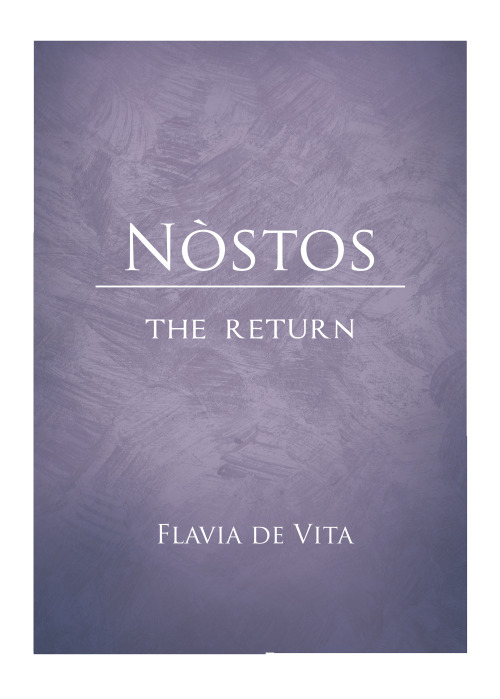
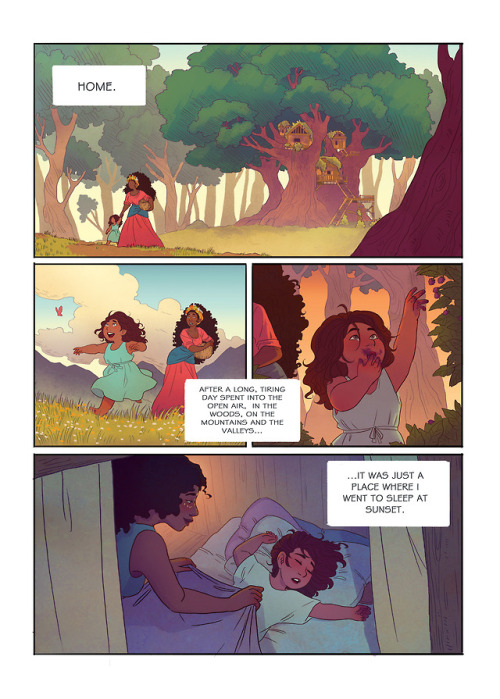
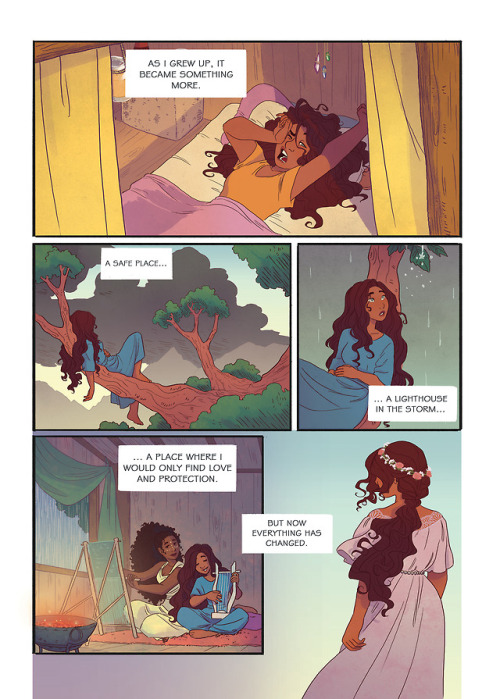
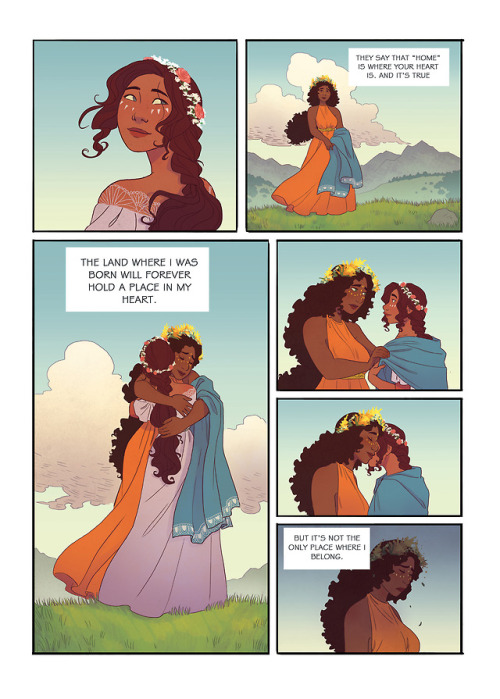
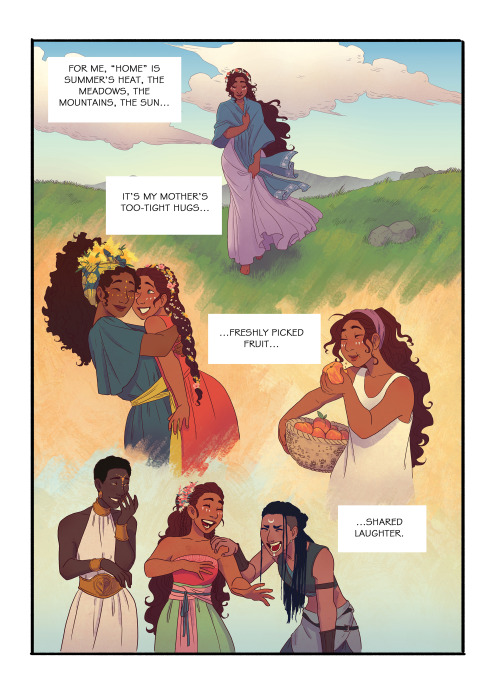
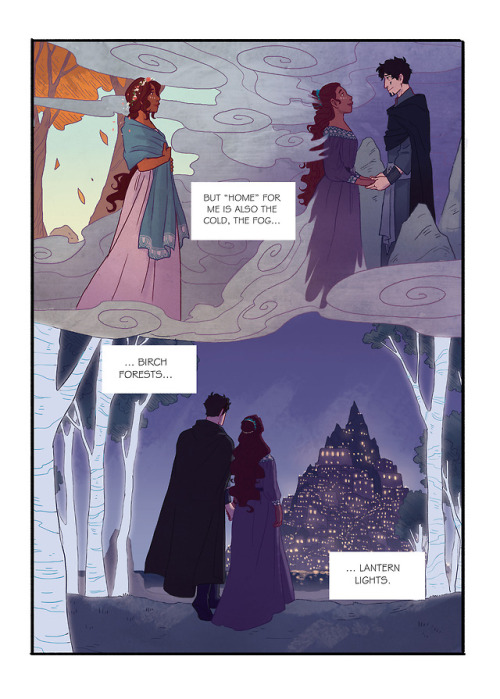
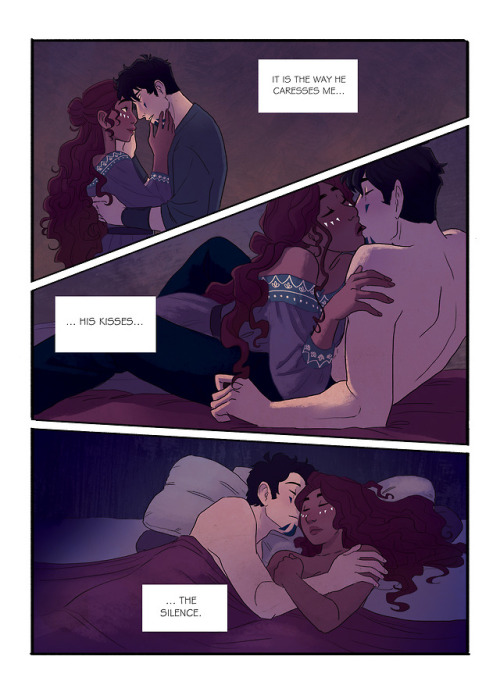
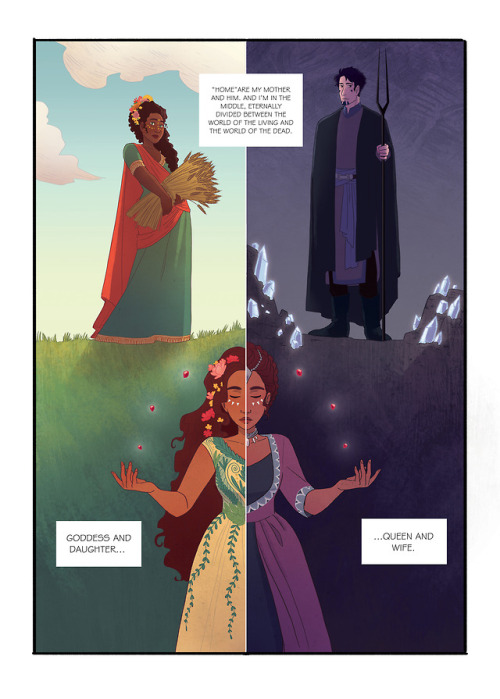
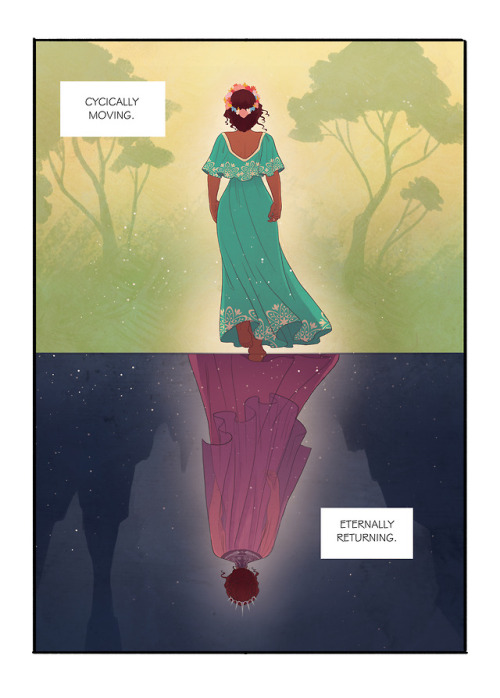
A short story I wrote this summer.




Read that marimos can get sick from receiving too much light, but this man of sunshine is only making them love sick.
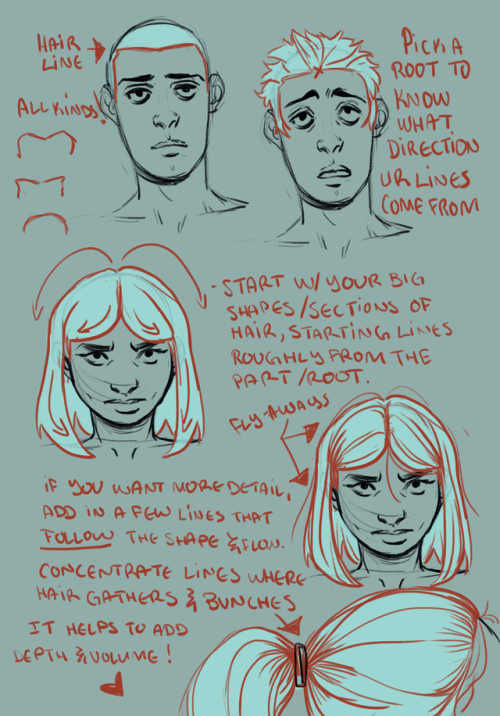
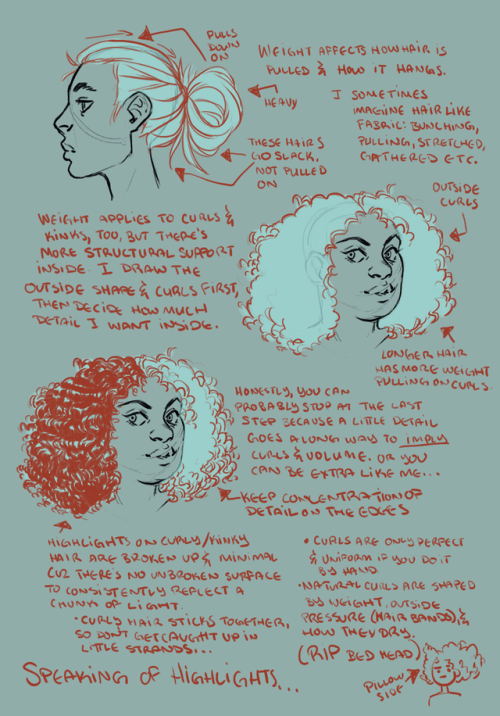
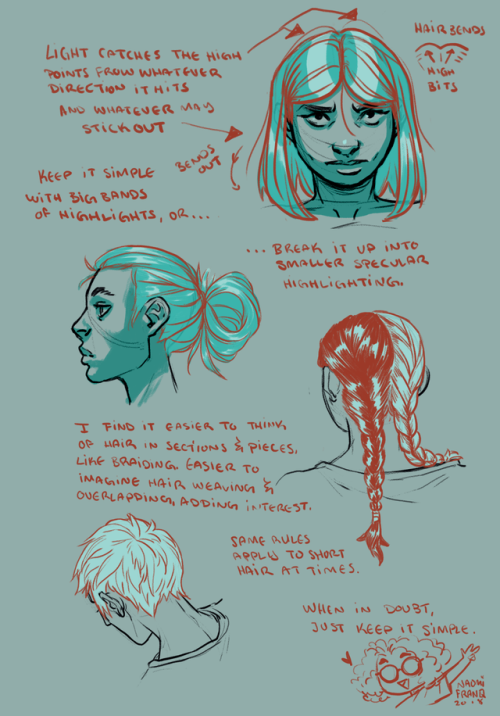
I jotted down for a friend of mine some tips and notes on how I approach drawing hair, and things I keep in mind while doing so, and thought I’d share. There are loads of other ways to do it, and the learning never stops, so I hope this helps!
Drafting Your Creative Time: Your Guide to Planning a Year of Creative Writing
2024 is about to start. You’re going to venture into another year of writing incredible stories, but what will that practically look like? I feel more in charge of my creativity by planning rough writing schedules. Here’s how you can do the same without locking yourself into a too-strict calendar that leaves your writing spirit depleted.
Set One Writing Goal
Twelve months is a lot of time, but anyone can handle a single goal. Make the next year easy on yourself by picking one thing you want to accomplish (and let’s not make it “publish my novel” if you’re just starting the manuscript on January 1, given how it takes roughly 18 months of work after you get an agent) (and that can take a few weeks to a few years, depending on your querying experience!).
Try picking a manageable writing goal like these:
I will write 10 chapters of my novel.
I will make a collection of 5 short stories I write this year.
I will submit a short story to at least 3 contests this year.
I will publish one new work of fanfiction in the next 12 months.
I will write one short story in a new genre.
Publishing a book can be a long-term goal, but your 2024 goal should be easy to break down into manageable steps you can accomplish by yourself. You’ll be more likely to reach the finish line and work toward another goal.
Establish a Stress-Free Writing Schedule
Creativity comes and goes, but your writing will never get done if you don’t form some kind of schedule. Your upcoming year could look something like this:
I’ll write every Wednesday night between 7-7:30 p.m.
I’ll use voice-to-text to get my story-related thoughts on virtual paper for five minutes every morning before school.
I’ll do freestyle writing for five minutes on Mondays and Saturdays to keep my thoughts flowing, even if I don’t find more time to work on my story that week.
Your schedule should be realistic, which means it shouldn’t stress you out. Make it match your weekly and daily routine. When do you naturally feel most energized? When can you carve out ten minutes for your craft?
Remember, you can always (and should!) adjust this set schedule as time goes on. Your non-creative schedule most likely won’t look the same on January 1 as it will on December 31.
Save a Few Writing Prompts
You might have a few weeks here or there when you’re juggling life’s responsibilities and can’t get to your WIP. It happens to all of us!
When you’re busy, try answering a writing prompt in three sentences or less. Use your phone, a sticky pad, or whatever’s nearby. You never know if it’ll inspire you later when you’re free to write.
In the meantime, you’ll keep using the creative side of your brain so your writing abilities don’t feel so distant.
Check out these prompt apps if getting online isn’t your thing or takes too much time from your busy schedule!
Find a Writing Community
There are so many ways to build a writing community. Start a tumblr about it (guilty as charged) or join a Facebook group. Find an active Reddit thread about your favorite genre or join a Discord server with writers.
You don’t even need to start talking to others and making friends if it makes you anxious. Read what people are saying to get inspired by everyone. You’ll naturally join in when you get excited about something they’re discussing and keep creative writing at the front of your mind.
Read Lots of Books
I always feel more connected to my writing when I’m actively reading. Artists of any kind need a source of inspiration to keep their creativity flowing. Keep an actively growing To Be Read list with apps like Story Graph (a Goodreads-type app that isn’t owned by Amazon and gives so much more information about your curated reading history!).
Visit your local library if you don’t have the money for new books all the time (who does?). As you get inspired by what you read, you’ll also pick up skills from authors you admire or note things you don’t want to recreate. Study each story’s structure and character development. You’ll return to your WIPs with renewed passion.
Embrace the Scary Editing Stage
Your first draft is your thoughts and dreams poured out on paper. The editing stage is where you refine and re-write your work until it shines. Set aside specific time for editing after completing a first draft of any story. Even if your editing phase doesn’t take very long, working on line edits and developmental edits will make your work so much better.
It’s also a normal form of frustration for writers, but one that happens no matter where your writing goes (on fanfiction websites, short story contests, a literary agent’s desk, etc.).
Schedule Your Rest
Writing might feel like a natural hobby, but your brain and body still need to rest after periods of intense focus/work. Schedule rest periods into your daily or weekly calendar. It’s time to recharge in whatever ways best suit your body, like:
Sitting outside
Walking in a park
Reading
Sitting in a hot bath
Going to the movies
Sleeping in
Keep in mind that sometimes you’ll need more rest than others. Extend some self-compassion by checking in with your physical and mental energy frequently during the next year. If you take time to rest, you’ll be less likely to burn out creatively.
-----
This next year will be full of growth, challenges, and joys in your writing life. Embrace every second by resting and writing in new ways.
how to write relatable characters
writing relatable characters may seem like an easy task, especially when you’re constructing your protagonist. but what if you want to make your antagonist likeable? what if you want people to hate your protagonist but still root for them? all of this and more requires that your characters be relatable. they need to feel real, so how do you do that? here’s how:
- flaws: this is probably obvious. everyone has flaws, so we should give our characters flaws, too. this applies even if your character is non-human; they cannot escape the personification that we as writers or readers project onto them. we are humans reading, so we expect to see human qualities everywhere we look. if you’re having trouble of identifying your character’s flaws, here are some prompts for ways to think about flaws beyond a list:
what skills do they lack? what do they struggle with?
can their strengths be turned against them as a weakness?
what makes them react emotionally or impulsively?
are they aware of their flaws? if so, do they want to improve them or change them?
- quirks: these are what make your character unique or special, and no, i don’t mean purple eyes or unique physical traits. i mean: what makes your character authentically themselves? what traits define them that few others have? some ways to think about this are:
how do they react when nervous? do they have a tell? similarly, how do they react on behalf of any emotion?
what skills do they have that hardly anyone else has?
what obscure thing are they obsessed with?
do they have a unique outlook on life compared to their peers?
- values: these come from life experiences: where we were raised, our family and friends, our community, religious affiliations, etc. i suggest identifying eight to ten values that define your character and then narrowing that list down to five values that mark their core or essence. think about how these values influence their choices, decisions, and ultimately, the plot of the novel. here are some more prompts to think about values:
how do they react when their values are challenged? are they one to speak up or do they sit back in the shadows?
what, if anything, will change or shatter their values?
are their actual values misaligned with their believed values?
- stakes: what is at risk for your character? what is motivating them? stakes don’t need to be over the top or life or death; they can be as simple as maintaining a relationship or reaching a goal. unless there’s an outside influence (ie. percy’s mother being kidnapped in The Lightning Thief), most stakes—especially those relatable—tie back to values. even those influenced by outside factors can tie back to values: the only reason percy is motivated to get his mother back is because he cares for her and she is the one person who has always advocated for him and cared for him. he values family and riordan uses his family to motivate him and incite the plot. generally, there will be one overarching stake for your character, but throughout your novel, there should be several smaller stakes. these may not service the plot but should elaborate on your character nonetheless. some ways to think about stakes include:
how can i use internal or external factors to create convincing, relatable stakes that tie back to basic values?
why does the overarching stake matter to my character? why do they care?
how can i raise the stakes or introduce new ones that are relevant to my character and illustrate them as a relatable being?
- connection: even if your character is an introvert, they will still be connected to someone, something, or even an idea. we, as humans, look to certain people, pets, objects, and ideas to maintain our sense of reality whether we realize it or not. if your character prides themselves in having no attachments, think about the ideas or themes that mark the cornerstones of their reality. most human beings strive for some form of connection, so here are more prompts for thinking about your characters and connection:
what does connection mean to my character? how do they show how they value their connections or relationships?
how does my character’s behavior change when around different connections?
what connections define my character and their reality? how will these connections influence my character and/or the plot?
how will removing or challenging a connection change, influence, or motivate my character?
a good rule of thumb is to treat a character as a human, not a plot device. there is a time or place in which a character must act as a plot device, but if you’re wanting your readers to be compelled by your narration and the characters within them, you should strive to write your characters as human (aka as relatable). one of the greatest pleasures i find in writing is when other’s identify themselves in my writing.
you’re not just here to tell a story, you’re here to connect with others through the illustration of your characters. let the reader navigate your prose as a detective, to search for and identify the evidence provided by you. that is to say, show us how these things manifest in your character. don’t tell us.
happy writing! hopefully this post gave you some ways to start thinking about how to show the relatability of your character. if you have any questions about implementing these tools or about writing characters, our ask box is always open.
things people do in real world dialogue:
• laugh at their own jokes
• don’t finish/say complete sentences
• interrupt a line of thought with a sudden new one
• say ‘uh’ between words when unsure
• accidentally blend multiple words together, and may start the sentence over again
• repeat filler words such as ‘like’ ‘literally’ ‘really’ ‘anyways’ and ‘i think’
• begin and/or end sentences with phrases such as ‘eh’ and ‘you know’, and may make those phrases into question form to get another’s input
• repeat words/phrases when in an excited state
• words fizzle out upon realizing no one is listening
• repeat themselves when others don’t understand what they’re saying, as well as to get their point across
• reply nonverbally such as hand gestures, facial expressions, random noises, movement, and even silence
On creating a wiki for your worldbuilding
Do you have a lot of lore to keep track of? Whether you're an author, a Game Master, or simply someone who really really likes worldbuilding, this post is for you.
Here's a quick overview of what I'll be talking about:
Platforms people use to create personal wikis
Formats and organization systems you may find useful when creating your own wiki
A brief look at the actual content you might put in your wiki (I'm planning a more in-depth post on that later with more images and demos)
And because this is gonna be a long'un, I'm putting a read-more here! I'll also make downloadable epub and PDF versions of this post available for free on my Ko-Fi at some point in the future.
(I'm also planning to reblog with a list of links later on, but I want this initial post shows up in search)
Also now that you're here, I'm going to say this isn't, like, super comprehensive or anything. I'm just talking about stuff I know a little about or have experience with. Please feel free to reblog with additions and/or corrections as needed!
What is a wiki?
According to Wikipedia, "a wiki is a hypertext publication collaboratively edited and managed by its own audience, using a web browser."
In this case, you'll likely be the sole person making updates to your wiki. The web browser part is optional these days as well, as you'll soon see.
Platforms for creating wikis
Websites for creating worldbuilding wikis
WorldAnvil
This one is actually designed for people who want to create big worldbuilding wikis.
Pros: Worldbuilding prompts! Those are great. It's got a pretty comprehensive set of article types too.
Cons: Kind of expensive to upgrade for features like making your wiki private, and it does NOT work well with adblock turned on, so if you don't want to pay for a membership you'll get inundated with ads. I'm not a huge fan of the interface in general and a lot of it isn't intuitive, but I like what they're doing so I support them anyway.
---
Tiddlywiki/Tiddlyhost.com.
In addition to having a cat as its icon and also a silly name, each 'article' you create with this is called a 'tiddler' which makes me think of Chuck Tingle. I haven't used it much myself yet, but I did make an account and it seems pretty neat.
---
Miraheze
A community-hosted wiki platform that runs on MediaWiki (which is what Wikipedia runs off of).
Pros: It's not Fandom.com.
Cons: You have to request a wiki and can't just make it yourself, as far as I can tell. I haven't actually looked into this one as much.
---
Neocities
An option for if you want to go super oldschool and create a website using only basic html and hyperlinks (without the handy shortcuts of bbcode or Markdown). Monthly cost is $5 usd if you want to have more space and your own domain.
Pros: 100% control over your content.
Cons: Doesn't support PHP databases for wiki software, and can be fairly labour-intensive to update if you break a link or something.
---
Fandom.com
Unfortunately, this one is the top result you'll get when you look up how to make your own wiki. I'm only including it here to tell you to stay as far away from it as possible!!
Its staff are known to ban wiki creators from their own wikis and a bunch of other nonsense that I'm not getting into here.
Programs and apps/web apps for creating worldbuilding wikis
Obsidian.md
My personal favourite. I'm planning to make a whole post about how I use it in the near future as part of this article series.
It's a markdown-based application that you can get on just about any platform (Windows, MacOS, Linux, iOS, Android, etc) which is great. Obsidian is really easy to pick up and use and also has great themes and community plugins!
Best thing is, it's FREE and you only have to pay if you use their publishing service, which... I don't, so.
---
Notion
I've heard this one is pretty good too. Idk if it costs anything. It's another "second brain" style app (might be markdown also?) and I think it might do more than Obsidian, but I haven't checked it out much myself.
---
Microsoft Word/Google Docs etc.
...Or just about any word processor that lets you create internal hyperlinks. Word may work best due to the collapsible headings so it doesn't get too unwieldy, but *shrug* whatever floats your boat.
---
Excel/Google Sheets etc.
Or, again, any spreadsheet creator that lets you create internal hyperlinks.
I'd recommend having some basic spreadsheet knowledge before doing this. It could get complicated. Before I started using Obsidian, I was using Sheets to keep track of my glossary, notes about characters, and plot ideas.
Types of formatting & organization systems
There are as many organization systems as there are people who want to organize their stuff. Everybody needs something a little different! I find the ones that work best for me are systems that have a lot of customization options.
Here are a couple I know of.
Johnny Decimal
This system is absurdly simple in its concept and yet so versatile. From their website (it's just johnnydecimal dot com but I'll link it in a reblog later):
Take everything you need to organise and sort it in to, at most, ten large buckets.
Make sure the buckets are unambiguously different.
Put a label on each bucket.
Their website has a better explanation than I can give in this post, but I'll sum up the appeal of this system as quoted from their site: "There's only one place anything can ever be."
Usefully, part of this method is creating a directory for the rest of the system.
So if you're like me and tend to shove things wherever only to lose track of it later, this is a great system—especially when used in conjunction with the Zettelkasten Method (see below).
---
Zettelkasten Method
Originally devised as an extensive paper-based knowledge management system, Zettelkasten is meant to easily add new entries to a knowledge base while giving each one a unique ID for easy 'linking.'
The creator of this method said 'it is not important where you place the note, as long as you can link to it.'
As with the Johnny Decimal system, I can't explain it super succinctly (nor can the website, if I'm being honest), so I'll include a link in a future reblog for a video that gave me an excellent run-down of the basics.
Setting up your own system
An organization system is only useful if you can actually, y'know, use it.
It can be fun to set up a super-detailed organization system with predetermined categories for everything, but is it easy for you to use? How will you navigate it?
Making decisions
There will be a lot of decisions to make as you set up your system. The only set-in-stone rule I follow is... don't set anything in stone. It's okay if you decide something that doesn't work later on.
Figuring out your categories
My advice: go fairly broad. You can always sub-categorize. I'm going to go over my own wikis for Athenaeum and Rocket Boosters in detail in a later post, but here are the starting top-level categories I'd recommend for worldbuilders:
A meta category for notes about your database, templates, and any relevant research you've done.
Characters, including main characters, minor characters, and important figures
Worldbuilding
In the last category, which is the main reason for the existence of my wiki, I might have:
Culture
History
Locations
Organizations
Lore (if relevant)
Technology
Transportation
I'll go over the nuances of these 'main' subcategories in that future post I mentioned. In other words, the stuff that actually goes in those categories!
Determining the importance and relevance of worldbuilding elements
You'll need to figure out whether a topic is complex enough to deserve its own entry, or if it should be a sub-heading under another entry. It's okay if you decide on both! I have short subheadings under some entries that amount to "see [link to main entry on that topic]."
I've also decided to expand subheadings into their own topics, and I've removed topics as their own entry and shoved them under subheadings. I do this a lot, in fact! So it's okay if you don't know.
Templates
Will you be creating several of one type of entry?
Individual character profiles
Towns and cities
Factions
(to name a few)
It might be handy to figure out the basic types of information you'll need about each of those things and create a template for them.
A character template might have spaces for the basics, such as name, role, age, and so on.
Some characters will have a lot more information, and some might have even less than what your template dictates! And that's fine.
A word of warning about using system-creation as procrastination
Creating a wiki can be a daunting task. You might decide it's not for you, and that's okay. But you might also decide to go headlong into the process and work on every minute detail, and that is also okay, but.
But.
Beware of using your wiki as an excuse to procrastinate your actual writing/session preparation. Yes, use it to keep track of all the lore you've injected into your manuscript/campaign/whatever, just make sure it stays in its place as a companion to your main project rather than becoming your main project.
How formal should your entries be?
Honestly this one's entirely up to you. I have a mix. Some entries are written like Wikipedia entries with a thorough explanation of the topic with proper punctuation and formatting, while others are simply bullet-point lists of thoughts and ideas that I can return to at a later date.
What methods do you use to keep track of your lore and worldbuilding? Let me know in a reblog or comment!
And please make sure to check the notes. I'll be reblogging with links, and then reblogging that reblog to make sure they're, y'know, actually visible in the notes.
-
 oddlyemptypandemonium liked this · 3 days ago
oddlyemptypandemonium liked this · 3 days ago -
 bleuetteecatholic liked this · 4 days ago
bleuetteecatholic liked this · 4 days ago -
 oddlyemptypandemonium reblogged this · 1 week ago
oddlyemptypandemonium reblogged this · 1 week ago -
 actuallyididnt liked this · 1 week ago
actuallyididnt liked this · 1 week ago -
 swingincalzonefanstudent liked this · 1 month ago
swingincalzonefanstudent liked this · 1 month ago -
 creativeautistic liked this · 2 months ago
creativeautistic liked this · 2 months ago -
 wynters-writings liked this · 3 months ago
wynters-writings liked this · 3 months ago -
 thereadingpenguins liked this · 3 months ago
thereadingpenguins liked this · 3 months ago -
 cogroni liked this · 4 months ago
cogroni liked this · 4 months ago -
 ayushsthings reblogged this · 4 months ago
ayushsthings reblogged this · 4 months ago -
 ayushsthings liked this · 4 months ago
ayushsthings liked this · 4 months ago -
 tomriddl liked this · 5 months ago
tomriddl liked this · 5 months ago -
 uhhhhhhhhhhhhhhhhhhhhhhhhhhhhuh liked this · 5 months ago
uhhhhhhhhhhhhhhhhhhhhhhhhhhhhuh liked this · 5 months ago -
 schatjechest reblogged this · 5 months ago
schatjechest reblogged this · 5 months ago -
 litnightsky liked this · 5 months ago
litnightsky liked this · 5 months ago -
 jonnyardor reblogged this · 5 months ago
jonnyardor reblogged this · 5 months ago -
 jonnyardor liked this · 5 months ago
jonnyardor liked this · 5 months ago -
 muzzyinminaland reblogged this · 6 months ago
muzzyinminaland reblogged this · 6 months ago -
 ashleymasenado liked this · 6 months ago
ashleymasenado liked this · 6 months ago -
 humanradiojmp reblogged this · 6 months ago
humanradiojmp reblogged this · 6 months ago -
 newdawnhorizon reblogged this · 6 months ago
newdawnhorizon reblogged this · 6 months ago -
 newdawnhorizon reblogged this · 6 months ago
newdawnhorizon reblogged this · 6 months ago -
 bergamondt liked this · 6 months ago
bergamondt liked this · 6 months ago -
 chanceofraine liked this · 6 months ago
chanceofraine liked this · 6 months ago -
 companionwolf reblogged this · 6 months ago
companionwolf reblogged this · 6 months ago -
 i-must-have-flowers liked this · 7 months ago
i-must-have-flowers liked this · 7 months ago -
 thatsimreese liked this · 7 months ago
thatsimreese liked this · 7 months ago -
 mottinthemainpot liked this · 7 months ago
mottinthemainpot liked this · 7 months ago -
 cepheusgalaxy reblogged this · 7 months ago
cepheusgalaxy reblogged this · 7 months ago -
 cepheusgalaxy liked this · 7 months ago
cepheusgalaxy liked this · 7 months ago -
 rapidkirby3000 liked this · 7 months ago
rapidkirby3000 liked this · 7 months ago -
 tinyreviews reblogged this · 7 months ago
tinyreviews reblogged this · 7 months ago -
 freshgratednutmeg reblogged this · 7 months ago
freshgratednutmeg reblogged this · 7 months ago -
 thatonekreachur liked this · 7 months ago
thatonekreachur liked this · 7 months ago -
 atouchofmidnight liked this · 8 months ago
atouchofmidnight liked this · 8 months ago -
 freshgratednutmeg liked this · 8 months ago
freshgratednutmeg liked this · 8 months ago -
 ffrnskuh liked this · 8 months ago
ffrnskuh liked this · 8 months ago -
 werid-angler-bug liked this · 8 months ago
werid-angler-bug liked this · 8 months ago -
 quirkyquakes liked this · 8 months ago
quirkyquakes liked this · 8 months ago -
 dragooned-speaks liked this · 8 months ago
dragooned-speaks liked this · 8 months ago -
 koyaberries liked this · 8 months ago
koyaberries liked this · 8 months ago -
 beneaththesingingmoon liked this · 8 months ago
beneaththesingingmoon liked this · 8 months ago -
 qui6752975 liked this · 8 months ago
qui6752975 liked this · 8 months ago -
 neverputsaltinyoureyes reblogged this · 8 months ago
neverputsaltinyoureyes reblogged this · 8 months ago -
 sapphiremythology liked this · 8 months ago
sapphiremythology liked this · 8 months ago -
 nemo1023429 liked this · 8 months ago
nemo1023429 liked this · 8 months ago -
 readerofportrait liked this · 8 months ago
readerofportrait liked this · 8 months ago -
 snekinnatenk liked this · 8 months ago
snekinnatenk liked this · 8 months ago
